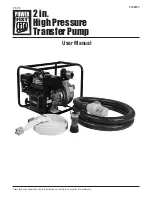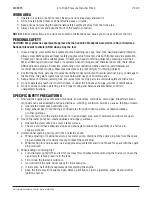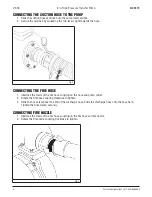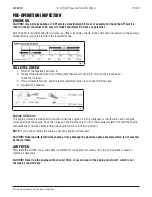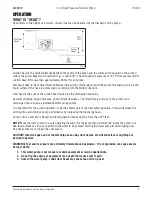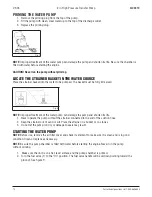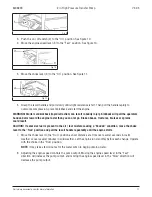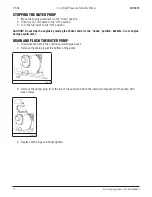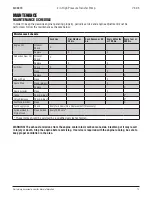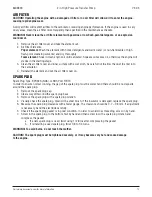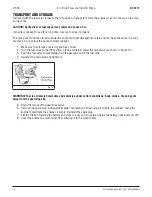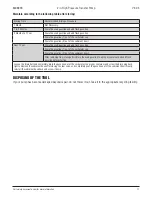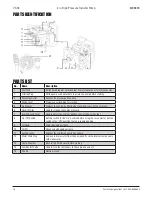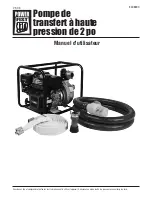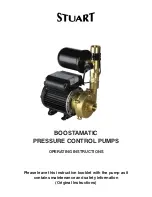
2 in. High Pressure Transfer Pump
4
For technical questions call 1-800-665-8685
8408890
V 3.03
5. When starting equipment:
a. Ensure the spark plug, muffler, fuel cap and air cleaner are in place.
b. Do not crank the engine with the spark plug removed.
6. When operating equipment:
a. Do not pump flammable liquids, such as fuel or fuel oils.
b. This water pump is not for use in mobile equipment or marine applications.
c. Do not tip the engine or equipment at an angle that causes fuel to spill.
d. Secure the water pump. Loads from hoses may cause the unit to tip over.
e. Make sure that the pump is primed before starting.
7. When transporting or repairing equipment:
a. Transport / repair with the fuel tank empty or with the fuel shutoff valve off.
b. Disconnect the spark plug wire.
8. When storing fuel or equipment with fuel in the tank:
a. Store away from furnaces, stoves, water heaters, clothes dryers or other appliances that have a pilot
light or other ignition source because they can ignite fuel vapours.
9. Contact with the muffler area can result in serious burns. Exhaust heat / gases can ignite combustibles,
structures or damage the fuel tank causing a fire.
a. Do not touch hot parts and avoid hot exhaust gases.
b. Allow equipment to cool before touching.
c. Keep at least 5 feet (1.5 m) of clearance on all sides of the pump including overhead.
10. The starter and other rotating parts can entangle hands, hair, clothing or accessories.
a. Never places hands or body parts inside of a running pump or hoses.
b. Never operate a water pump without the protective housing or covers.
11. Excessively high operating speeds increase the risk of injury and damage to the water pump. Excessively
low speeds impose a heavy load.
a. Do not tamper with the governed speed.
b. Do not modify the water pump.
c. Do not allow unqualified persons or children to operate or service the water pump.
12. Be sure the pump chamber is filled with water before starting the engine. Never run the pump
without priming.
13. Use a non-collapsible hose on the suction side of the hose.
14. Pumping seawater, beverages, acids, chemical solutions or any other liquid that promotes corrosion can
damage the pump.
15. Ensure all connections are airtight.
16. Do not obstruct the suction or discharge hose in any way.
17. Never operate the pump without the strainer basket connected to the end of the suction hose.
18. Never allow vehicles to drive over hoses. If a hose must be positioned across a roadway, use planking on
each side of the hose to allow vehicles to pass over without obstructing or collapsing the hose.
19. Anchor the pump to avoid equipment movement.
20. Keep equipment away from the edge of a river or lake where it could cause the bank to collapse.
21. Do not insert any objects through the cooling slots.
22. Never operate units with broken or missing parts, or without protective housing or covers.
23. Do not by-pass any safety device on this machine.
24. Never move the machine by pulling on hoses, use the frame to lift the unit.
25. Check the fuel system for leaks or signs of deterioration, such as chafed or spongy hose, loose or missing
clamps, or damaged tank or cap. Correct all defects before operating the water pump.

